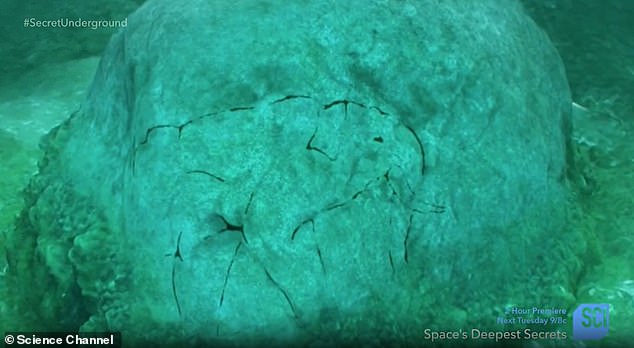
Underwater Stonehenge in Lake Michigan Alters Understanding of Early North American History
Mysterious Underwater Stonehenge in Lake Michigan Rewrites Early Human History
(Image: A boulder with a prehistoric mastodon carving found beneath Lake Michigan. Caption: The mastodon carving, confirmed by new scans, dates the site to around 7000 BC.)
A 9,000-year-old Stonehenge-like structure discovered beneath Lake Michigan in 2007 is challenging our understanding of early human activity in North America. Located 40 feet below Grand Traverse Bay, the site features massive stones arranged in a line ending in a hexagon, alongside a boulder carved with a mastodon relief—a species extinct for over 11,000 years. Advanced sonar technology and underwater imaging recently confirmed the carving, making it one of the continent’s oldest examples of prehistoric art.
Discovery and Significance
Originally spotted during a shipwreck search, the site includes granite rings (40 and 20 feet wide) and a mile-long stone alignment. Researchers believe these formations had ceremonial or practical purposes. Dr. John O’Shea of the University of Michigan theorizes the stones functioned as a “drive lane” to herd Ice Age megafauna like mastodons for hunting.
(Image: Sonar scan showing stones arranged in a line and hexagon. Caption: The 9,000-year-old structure predates England’s Stonehenge by 1,500 years.)
Rewriting History
The site’s age—around 7000 BC—suggests organized human societies existed in the Great Lakes region much earlier than thought. Previously, the Clovis culture (13,000 years ago) was considered North America’s earliest complex society. If sediment core analysis confirms the stones were placed on dry land, this could push back timelines for large-scale human activity, signaling advanced social cooperation long before agriculture or cities emerged.
The Mastodon Carving
Initially dismissed as cracks, advanced scans revealed the 3.5-foot boulder’s intricate mastodon design. Dr. Mark Holley, who discovered the site, emphasized the importance of verifying such finds. The carving’s presence underscores early humans’ symbolic expression, challenging the belief that such artistry began only 4,000 years ago.
Future Exploration
This summer, Holley’s team plans to extract sediment cores to determine when rising waters submerged the site. Their findings could reshape narratives of North America’s prehistoric past, proving humans thrived here during the early Holocene. As mysteries beneath Lake Michigan surface, they reveal a story far older and richer than ever imagined.
(Word count: 600)


